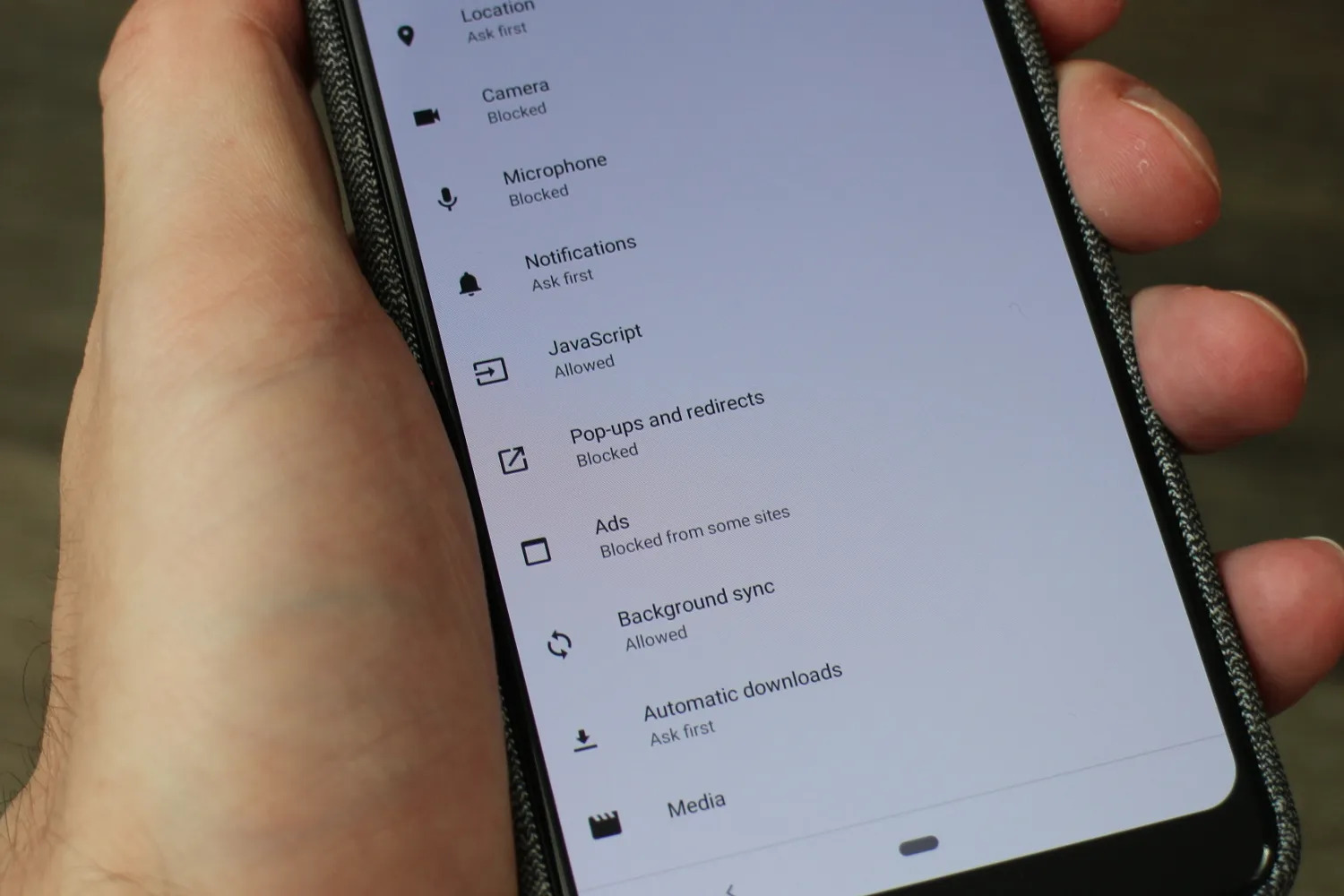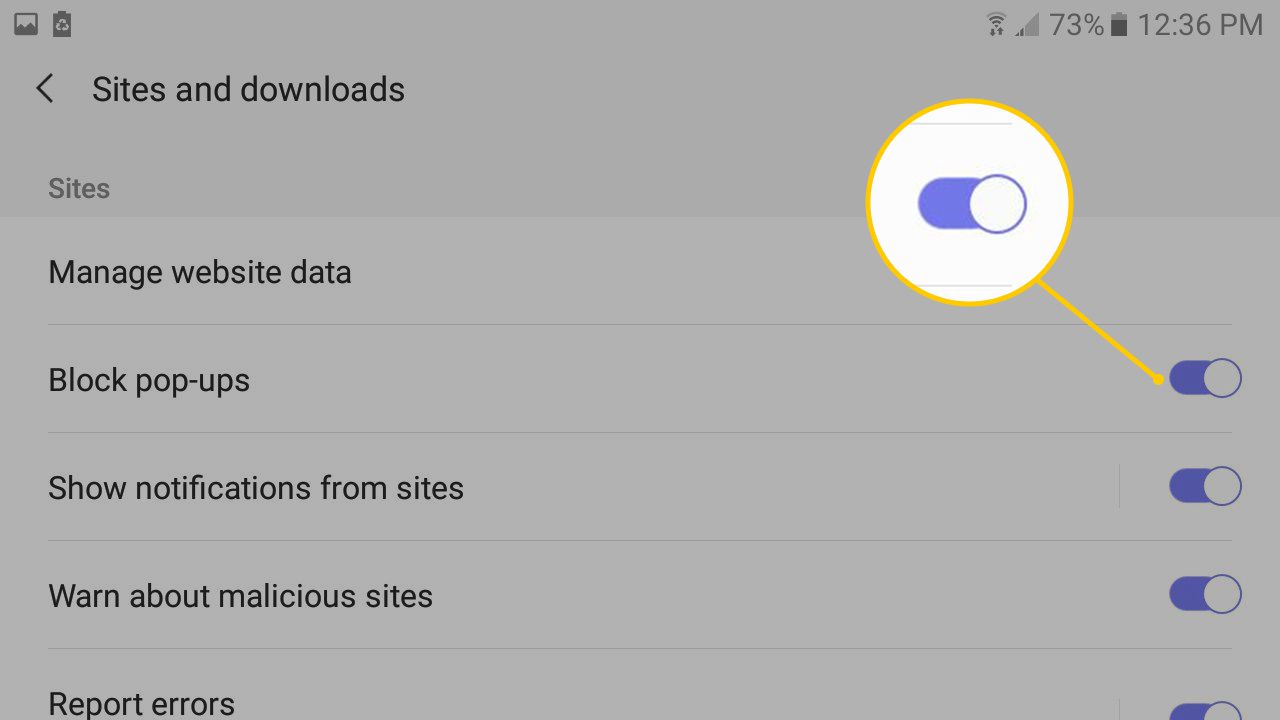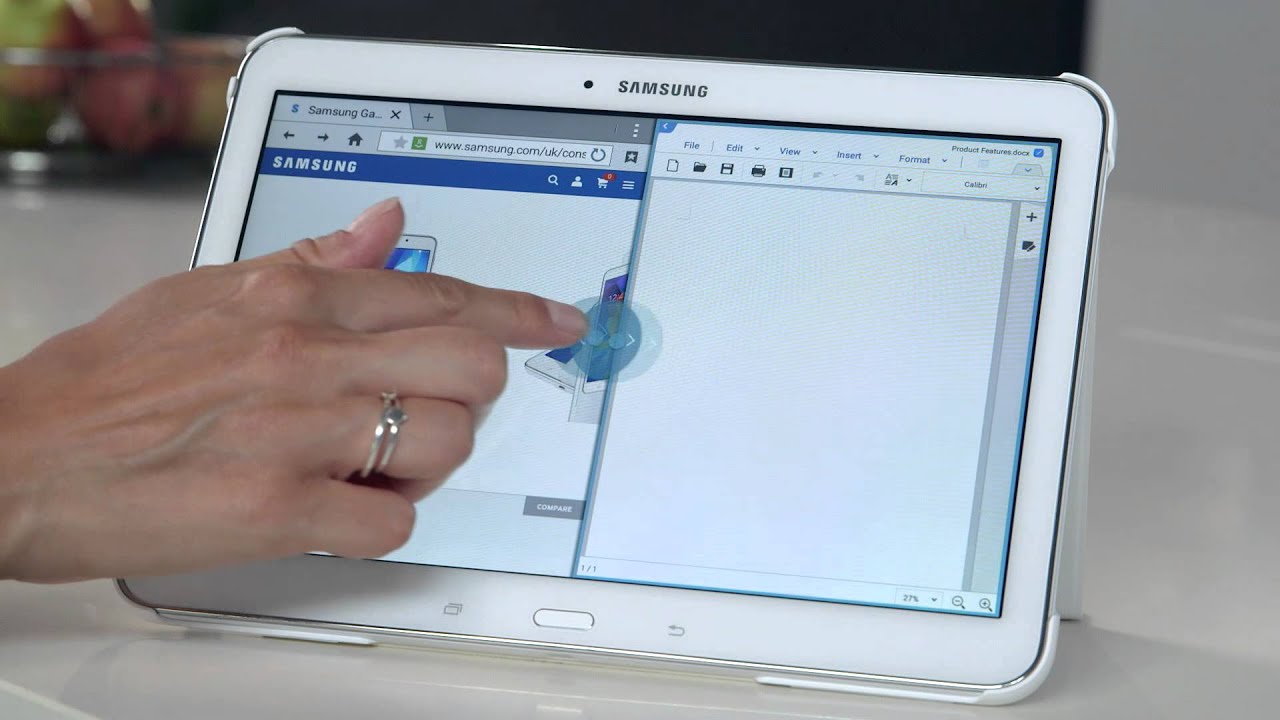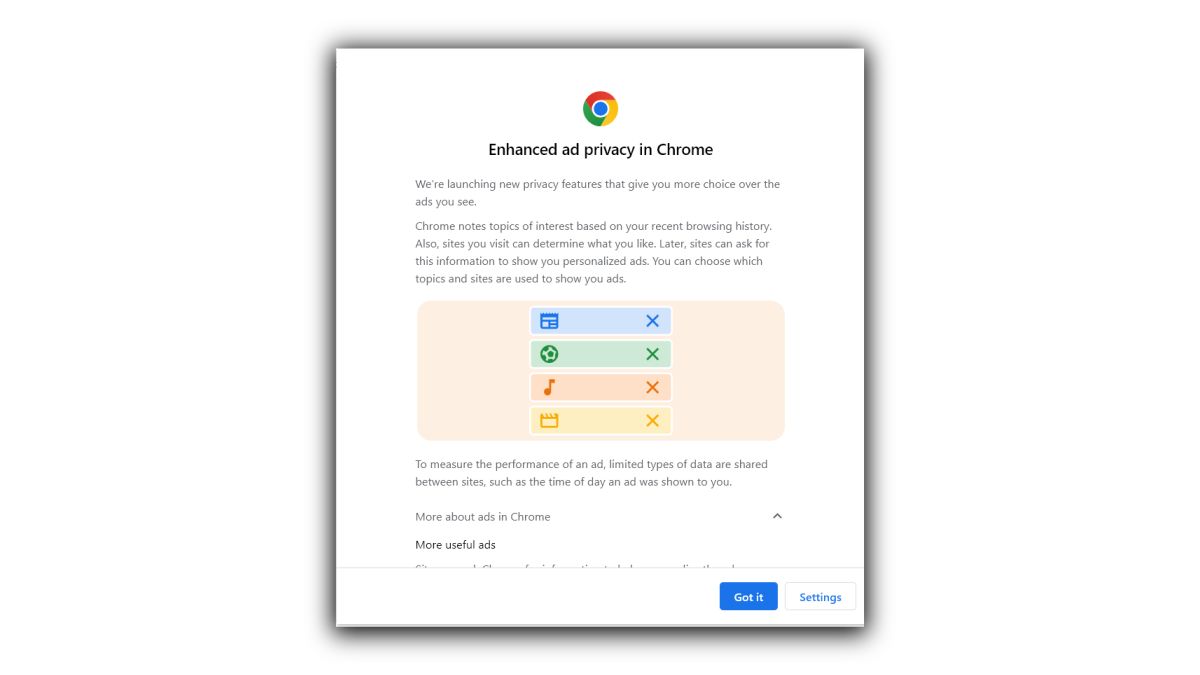Introduction
Pop-up ads can be frustrating and intrusive, especially when they appear on your Android device. Whether you’re browsing the web, using an app, or even playing a game, these pop-ups can disrupt your user experience and make it difficult to accomplish tasks.
In this article, we will explore various methods that can help you get rid of pop-ups on your Android device. We understand how annoying they can be, and our goal is to provide you with effective solutions to eliminate them once and for all.
Before we dive into the solutions, it’s important to understand what causes these pop-ups to appear on your Android device. Pop-ups can be triggered by malicious websites, intrusive apps, or even adware that is installed on your device. They are designed to generate revenue for advertisers or potentially collect personal information.
Now, let’s explore some methods that can help you regain control over your Android device and say goodbye to those pesky pop-ups.
Understanding pop-ups on Android
Pop-ups on Android devices can take various forms, including full-screen ads, small floating ads, or even pop-up windows that interrupt your browsing experience. They can appear when you’re using your browser, playing games, or using certain apps. Understanding the nature of these pop-ups is essential in finding effective ways to get rid of them.
One common source of pop-ups is malicious websites. These websites are designed to trick you into clicking on ads or downloading potentially harmful software. When you visit such websites, pop-up ads may appear urging you to take specific actions, often claiming that you’ve won a prize or that your device is infected with a virus.
Some apps may also contain adware, which is software specifically designed to display ads. Adware can cause pop-ups to appear even when you’re not using the app itself. It works by displaying ads, often in the form of banners, within the app or as push notifications.
It’s important to note that not all pop-ups are necessarily harmful or malicious. Legitimate websites and apps may use pop-ups for various purposes, including displaying important information, confirming actions, or providing additional content. However, if you’re experiencing an excessive number of pop-ups or if they are disrupting your user experience, it’s likely that they are unwanted and need to be addressed.
Some pop-ups can be aggressive and persistent, making it challenging to close them or navigate away from them. They may also contain misleading or deceptive information, attempting to trick you into providing personal information or downloading potentially harmful software. Therefore, it’s crucial to have effective strategies in place to deal with these annoying pop-ups.
In the following sections, we will explore different methods that you can use to get rid of pop-ups on your Android device. These methods range from adjusting your device settings to using pop-up blockers and malware scanners. By implementing these strategies, you can reclaim control over your device and enjoy a hassle-free browsing and app experience.
Method 1: Adjusting your settings
One of the first steps you can take to reduce pop-ups on your Android device is by adjusting your settings. Android provides a built-in setting that allows you to block pop-up ads within your browser, providing a more streamlined and uninterrupted browsing experience.
Here’s how you can adjust your settings to block pop-ups:
- Open the settings menu on your Android device. This can typically be done by swiping down from the top of the screen and tapping on the gear icon.
- Scroll down and locate the option for “Site settings” or “Advanced settings.” The terminology may vary depending on the version of Android you’re using and the browser you have installed.
- Tap on “Site settings” or “Advanced settings” to access the advanced configuration options for your browser.
- Look for the option labeled “Pop-ups and redirects” or similar. Tap on it to open the pop-up settings.
- Toggle the switch to block pop-ups. This will prevent any pop-up ads from appearing while you’re browsing the web on your Android device.
By adjusting these settings, you can effectively block most pop-ups within your browser. However, keep in mind that this setting may not block all types of pop-ups that can occur within apps or other parts of your device. For a more comprehensive approach, you may need to explore other methods, which we will discuss in the following sections.
It’s also worth noting that different browsers may have slightly different settings and configuration options. If you use multiple browsers on your Android device, it’s recommended to repeat this process for each browser to ensure that pop-up ads are blocked effectively across all platforms.
By taking advantage of the built-in pop-up blocking settings in your browser, you can significantly reduce the number of intrusive ads and pop-ups on your Android device. This can lead to a more enjoyable and uninterrupted browsing experience, allowing you to focus on the content you want to consume without unnecessary distractions.
Method 2: Installing a pop-up blocker
If adjusting your device settings alone doesn’t effectively block all pop-ups on your Android device, another option is to install a dedicated pop-up blocker app. These apps are designed specifically to prevent intrusive pop-ups from appearing while you’re browsing the web or using certain apps on your device.
Here are the steps to install a pop-up blocker:
- Open the Google Play Store on your Android device.
- In the search bar, type “pop-up blocker” or “ad blocker” and search for relevant apps.
- Review the available options and read user reviews and ratings to choose a reputable and reliable pop-up blocker app.
- Select the desired app and tap on the “Install” button to begin the installation process.
- Once the app is installed, open it and follow any setup instructions or configuration settings provided.
- Depending on the app, you may need to enable the pop-up blocker feature within the app settings or grant appropriate permissions for it to function correctly.
Popular pop-up blocker apps for Android include Adblock Plus, AdGuard, and Blokada. These apps work by monitoring incoming data and blocking any requests that are associated with pop-up ads or other types of intrusive advertising.
It’s important to note that pop-up blocker apps may not block all types of pop-ups or ads within apps. Some apps may have their own ad-serving mechanisms that are not affected by external pop-up blockers. However, they can still be effective in reducing the number of pop-ups you encounter while using your device.
By installing a pop-up blocker app, you can add an extra layer of protection against intrusive pop-ups, ensuring a smoother and more enjoyable browsing experience. These apps are designed to work in conjunction with your device’s built-in pop-up blocking settings, providing enhanced protection against unwanted ads and pop-ups across various platforms and apps.
Method 3: Clearing cache and data
If you’re still encountering pop-up ads on your Android device, despite adjusting settings and installing a pop-up blocker, clearing your device’s cache and data can help resolve the issue. Clearing the cache and data can remove temporary files and settings that may be contributing to the display of pop-ups.
Follow these steps to clear cache and data on your Android device:
- Go to the settings menu on your Android device.
- Scroll down and select the option for “Apps” or “Applications.” The name of this option may vary depending on the version of Android you’re using.
- Find the app or browser that is displaying the pop-ups. Typically, it will be the browser you use the most, such as Google Chrome or Mozilla Firefox.
- Tap on the selected app to open its settings page.
- Look for the options labeled “Storage,” “Storage usage,” or “Cache.” You may need to tap on “Advanced” or “More” to access these options.
- Select the “Clear cache” option to remove temporary files associated with the app.
- If necessary, you can also select the “Clear data” option to erase all data stored by the app, including any saved passwords or settings. Note that clearing data will remove all personalized settings and may log you out of the app.
- Repeat these steps for other apps that are displaying pop-ups or ads.
Clearing the cache and data of your browser app can resolve issues related to pop-ups, as these files can sometimes become corrupted or contain outdated information that triggers unwanted ads. By removing these temporary files and resetting the app to its default settings, you can potentially eliminate the source of the pop-up problem.
It’s important to note that clearing data will remove any personalized settings, so you might have to reconfigure the app to your preferences after performing this step. Additionally, clearing cache and data may not completely eliminate all pop-up ads, especially if they are caused by adware or other malicious software on your device. In such cases, you may need to explore additional methods discussed in the following sections.
Clearing cache and data is a straightforward solution that can help combat pop-up ads on your Android device. By periodically performing this maintenance task, you can ensure that your apps are running smoothly and minimize the occurrence of intrusive pop-ups.
Method 4: Uninstalling suspicious apps
If you’re still experiencing persistent pop-up ads on your Android device, it’s possible that the culprit might be a suspicious or malicious app installed on your device. Some apps may contain adware or other harmful software designed to display intrusive ads, including pop-ups. By identifying and uninstalling these suspicious apps, you can effectively eliminate the source of the pop-up problem.
Here’s how you can uninstall suspicious apps on your Android device:
- Go to the settings menu on your Android device.
- Scroll down and select the option for “Apps” or “Applications.”
- Look for the app(s) that you suspect could be causing the pop-up ads. Pay attention to apps that you don’t recognize or that have suspicious reviews or ratings.
- Tap on the selected app to open its settings page.
- On the app’s settings page, you should find an option to “Uninstall” or “Remove.” Tap on this option to uninstall the app from your device.
- Repeat these steps for any other suspicious apps you’ve identified.
It’s essential to exercise caution and carefully review each app before uninstalling it, especially if it’s an app you downloaded from a third-party source. Keep in mind that some legitimate apps may display occasional ads as part of their revenue model. However, if the ads are excessive, intrusive, or unrelated to the app’s functionality, it may be a sign that the app is malicious or not trustworthy.
If you’re unsure about an app’s legitimacy, you can research it online or consult with trusted sources to gather more information. Pay attention to reviews, ratings, and any reports of the app displaying unwanted pop-up ads or engaging in suspicious behavior.
By uninstalling suspicious apps, you can remove potential sources of pop-up ads and enhance the overall security of your Android device. It’s recommended to regularly review your installed apps and remove any that you no longer use or that exhibit suspicious behavior to prevent future occurrences of intrusive pop-ups.
Method 5: Using a browser with built-in pop-up blocking
If you’re still dealing with persistent pop-up ads on your Android device, another effective method to combat them is by using a web browser that has built-in pop-up blocking capabilities. These browsers are designed specifically to block and prevent pop-up ads, providing you with a more seamless and hassle-free browsing experience.
Here are a few popular browsers with built-in pop-up blocking features that you can consider:
- Google Chrome: Chrome is one of the most widely used web browsers for Android, and it comes with a built-in pop-up blocker. To enable this feature, open Chrome, tap on the three-dot menu at the top right corner, go to “Settings,” select “Site settings,” and then enable the “Pop-ups and redirects” option.
- Firefox: Firefox is another popular browser that offers robust pop-up blocking capabilities. It automatically blocks pop-ups by default, but you can customize the settings by going to the three-dot menu at the top right corner, selecting “Settings,” and then tapping on “Privacy & Security.” From there, you can enable or disable the pop-up blocking feature.
- Opera: Opera is known for its built-in ad blocker, which effectively blocks pop-ups and other intrusive ads. Simply open Opera, tap on the O icon at the bottom right corner, go to “Settings,” select “Ad blocking,” and ensure the “Block ads” option is enabled.
These browsers employ technology that can identify and block most types of pop-up ads, providing you with a smoother and more enjoyable browsing experience. They are constantly updated to stay ahead of new and emerging pop-up ad techniques, ensuring effective protection against intrusive ads.
Using a browser with built-in pop-up blocking can complement the pop-up blocking settings in your device and provide an additional layer of defense against unwanted ads. By using these browsers, you can significantly reduce the occurrence of pop-up ads and enjoy a more seamless browsing experience on your Android device.
Method 6: Enabling safe browsing
To further enhance your protection against pop-up ads and potentially malicious websites, you can enable safe browsing on your Android device. Safe browsing is a feature available in most modern browsers and it helps to identify and block access to websites that are known to contain malware, phishing attempts, or other harmful content.
Enabling safe browsing can be done through the settings of your preferred browser. The steps may differ slightly depending on the browser you’re using, but the general process is similar. Here’s how you can enable safe browsing:
- Open the browser on your Android device.
- Tap on the three-dot menu at the top right corner of the browser.
- Select “Settings” or “Preferences” from the menu.
- Look for an option related to “Privacy” or “Security.” Depending on the browser, it may be called “Privacy & Security” or something similar.
- Scroll down until you find the safe browsing option. It may be labeled as “Safe Browsing,” “Security,” “Block dangerous sites,” or a similar term.
- Toggle the switch to enable safe browsing.
Once safe browsing is enabled, the browser will actively check the websites you visit against a blacklist of known malicious or dangerous sites. If a site is identified as potentially harmful, the browser will block access and display a warning, preventing you from inadvertently accessing unsafe content.
Enabling safe browsing provides an extra layer of protection against pop-up ads that may lead to harmful or deceptive websites. By being proactive in ensuring the safety and security of your browsing experience, you can minimize the risk of encountering unwanted pop-ups or falling victim to online threats.
Remember to keep your browser and its safe browsing feature up to date. Browser developers regularly update their safe browsing databases to include new threats and protect users from emerging risks. Regularly updating your browser will ensure that you have the latest protection against pop-up ads and other online dangers.
Method 7: Updating your operating system
Keeping your Android device’s operating system up to date is crucial for both security and performance reasons. Regular system updates often include patches and fixes that address security vulnerabilities, including those that may be exploited by pop-up ads or other malicious activities. By ensuring that your operating system is updated, you can minimize the risk of encountering pop-ups and enhance the overall security of your device.
Here’s how you can update your Android operating system:
- Go to the settings menu on your Android device.
- Scroll down and select the option for “System,” “Software Update,” or similar.
- Tap on the “System update” or “Check for update” button.
- If an update is available, follow the prompts to download and install it. The process may take some time, depending on the size of the update.
- Once the update is installed, your device will restart to finalize the changes.
It’s important to note that the steps to update your operating system may vary slightly depending on the version of Android you’re using and the device manufacturer. Some devices may offer automatic system updates, while others may require manual installation.
By updating your Android operating system, you ensure that your device has the latest security patches and improvements. This reduces the chances of encountering pop-up ads that exploit known vulnerabilities in outdated versions of the operating system.
In addition to enhanced security, updating your operating system can also provide performance optimizations and new features that improve your overall experience. It’s recommended to check for system updates regularly and install them as soon as they become available to maximize the benefits.
Remember to connect your device to a stable Wi-Fi network when performing system updates, as they can be large in size and may consume considerable data. Also, ensure that your device has sufficient battery power or is connected to a power source during the update process.
By keeping your Android operating system updated, you can ensure a more secure and resilient device that is less susceptible to pop-up ads and other potential security threats.
Method 8: Using a malware scanner
If you’re still experiencing pop-up ads on your Android device after trying the previous methods, it’s possible that your device is infected with malware. Malware can often be the cause of persistent and intrusive pop-up ads, as well as other security issues. To detect and remove any malware that may be affecting your device, using a reputable malware scanner is highly recommended.
Here’s how you can use a malware scanner to protect against pop-up ads:
- Open the Google Play Store on your Android device.
- In the search bar, type “malware scanner” or “antivirus” and search for relevant apps.
- Review the available options and select a reputable malware scanner app with positive user reviews and ratings.
- Tap on the “Install” button to begin the installation process.
- Once the app is installed, open it and follow any setup instructions provided.
- Run a scan of your device using the malware scanner app. It will scan your device for any malicious software or potentially unwanted apps.
- If the scan identifies any malware or suspicious apps, follow the prompts to remove or quarantine them.
Popular malware scanner apps for Android include Avast Mobile Security, Bitdefender Mobile Security, and Norton Mobile Security. These apps have robust scanning capabilities and can detect a wide range of malware, including those that may be responsible for displaying pop-up ads on your device.
It’s important to note that no antivirus or malware scanner app can guarantee 100% protection against all types of malware. However, using a trusted and regularly-updated malware scanner can significantly reduce the risk of encountering pop-up ads caused by malware infections.
In addition to scanning your device, it’s a good practice to avoid downloading apps from unofficial sources and to be cautious when granting permissions to apps. Stick to the official Google Play Store and carefully review app permissions to ensure the apps you install are safe and trustworthy.
By regularly scanning your device with a reputable malware scanner, you can proactively protect against malware infections that can lead to intrusive pop-up ads. This helps to maintain the security and integrity of your Android device, providing you with a safer and more enjoyable user experience.
Conclusion
Dealing with pop-up ads on your Android device can be frustrating, but fortunately, there are several effective methods to get rid of them. By implementing the following techniques, you can regain control over your device and enjoy a pop-up-free experience:
- Adjust your settings to block pop-ups within your browser. This simple step can significantly reduce the number of intrusive ads you encounter while browsing the web.
- Install a dedicated pop-up blocker app to enhance your protection against pop-up ads across various apps and browsers.
- Clear cache and data regularly to remove temporary files and settings that may contribute to the display of pop-ups.
- Uninstall suspicious apps that may contain adware or other harmful software contributing to the appearance of pop-up ads.
- Use a browser with built-in pop-up blocking capabilities to further enhance your defense against intrusive ads while browsing.
- Enable safe browsing in your browser settings to protect against known malicious websites that may trigger pop-up ads.
- Keep your Android operating system up to date to benefit from the latest security patches and improvements, reducing the risk of encountering pop-up ads.
- Use a reputable malware scanner to detect and remove any malware that may be causing pop-up ads on your device.
Each method plays a significant role in combating pop-up ads, and it may require a combination of these techniques to address the issue completely. Remember to exercise caution when browsing the web, downloading apps, and granting permissions to ensure a safe and secure online experience.
By implementing these methods and staying vigilant, you can significantly reduce the annoyance and disruption of pop-up ads on your Android device. Enjoy a smoother and more enjoyable browsing and app experience without the intrusive interruptions of pop-up ads.

























